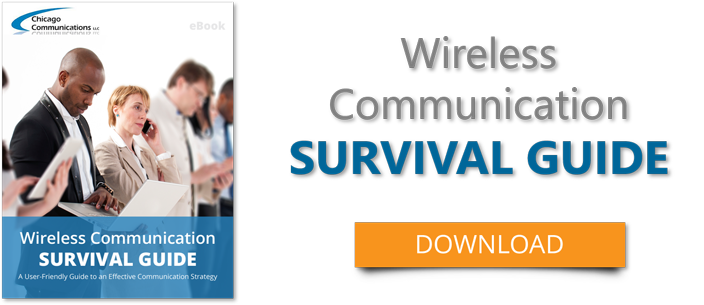
Large manufacturing facilities, school districts, and public safety areas need to be able to communicate across wide distances. That’s why many of them are using point-to-multipoint communication solutions.
What is the difference between point-to-point connectivity and point-to-multipoint connectivity? Which solution is the most affordable, efficient, and practical? It depends on the situation, of course.
We’ll talk you through it.
Two Wireless Connectivity Options
Wired technology is expensive and intrusive, requiring infrastructure, permits, and zoning considerations. High-speed wireless networks are being used successfully in manufacturing, hospitality, health care, education, and public safety to go where wired infrastructure cannot go.
Within wireless solutions, two main types of connectivity exist: point-to-point and point-to-multipoint.
Point-to-point connectivity works just like it sounds: It links a sender with a receiver. A wireless channel is used to connect the two devices, providing instant, reliable communication. It’s a great option when the sender and receiver are close to one another. But what happens when the two devices are far apart—like another building or campus? And what if communication needs to reach more than one device at the same time?
That’s where point-to-multipoint connectivity saves the day. The sender is at the center of a network that has multiple paths and end users. Point to multipoint connections use one transmitter and multiple receivers. The receivers don’t communicate with each other, but they can communicate with the main transmitter.
Who Is Using Point-to-Multipoint Connectivity?
Point to multipoint connectivity is a fast, affordable solution that is often used to connect facilities in remote locations and in long-range wireless solutions. It is used in large manufacturing facilities, school districts, and public safety areas. As long as the receiver sites are within range and visibility of the base station and there is not a need to transmit a large amount of data, this type of system can be ideal.
Benefits of Point-to-Multipoint Connectivity
There are several reasons why point to multipoint technology is growing in popularity.
Easy Installation
Point to multipoint technology is easier to install than other systems because, once the base station is installed, adding users is relatively simple.
Lower Costs
Because point to multipoint systems use WiFi, companies do not take on the expense of installing cables or paying for permits or fees. Both point-to-point and point-to-multipoint solutions eliminate phone company charges.
Reliability
Users are sharing one communication channel and not monopolizing channels. Because the receivers are only communicating with the main transmitter, no one has to control who is allowed to transmit at a given time.
Easy to Learn
No one needs extra headaches caused by learning new technology. The Cambium Networks Point-To-Multipoint is a tested, user-friendly solution that works for new field operators and networks.
Talk to the Experts
How do you know if a point-to-point or multipoint system is right for you? We’ll talk you through it.
An experienced, trusted communications provider—like Chicago Communications— is going to listen to your concerns and discuss your challenges. We want to know about your communication goals—and plans for the future.
We’ll be able to steer you to a solution that is right for you, your budget, and your timeline.



